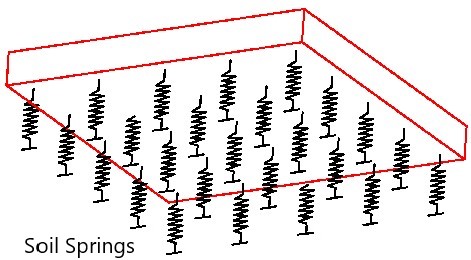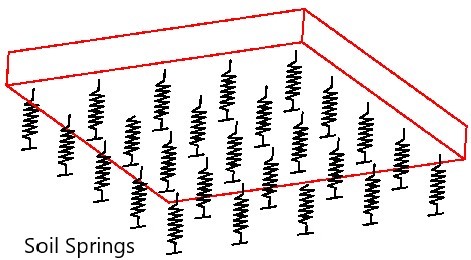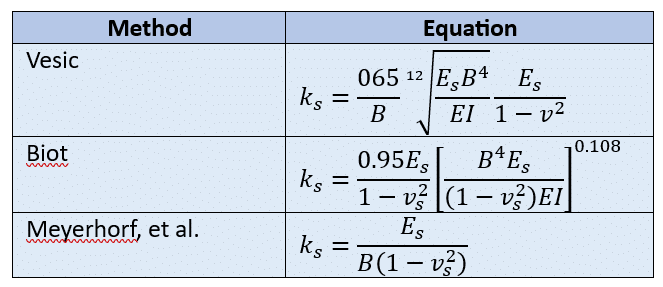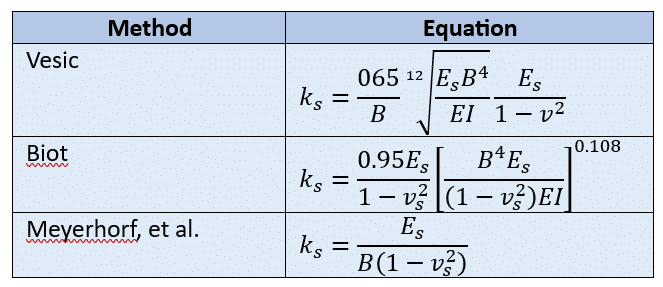The subsurface modulus of soil response is taken into account when the elastic behavior of the soil is used for analysis. It is the representation of the soil in the geotechnical analysis and model.
We use the spring element to represent the underground reaction. The following equation represents the underground soil reaction.
Underground reaction = soil pressure / soil settlement
k S = q/w
It is a kind of relationship between the pressure exerted and the settlement of the soil.
Today there are numerous software programs that can be used to model subsurface responsive soils.
If we know the modulus of elasticity of the subsoil, we can model the elastic behavior of the soil. SAP2000, Etabs and other similar structural analysis software programs can model soil.
In the past, when analyzing structures, planners often assumed that they behaved like rigid bodies. Today, technology has advanced and there are numerous software programs that can be used to model soil.
Analysis of slab foundations, combined foundations, pile analysis for lateral loads and pile buckling model in weak subsoil.
How to determine the subgrade modulus
There are several methods for determining the modulus of underground reaction, using test methods as well as the bearing capacity or standard penetration value (SPT).
Methods for determining subsurface response are described in Bowles' book “Foundation Analysis and Design.” A simplified empirical equation is provided to calculate the background response. The following is taken from Bowles’ book “Foundation Analysis and Design”.


“It was found that bending moments and calculated soil pressure are not very sensitive to the value used for ks because the stiffness of the structural element is typically 10 or more times the soil stiffness defined by ks. In view of this, the author suggested the following to determine ks from the allowable load capacity qa given by the geotechnical consultant:
SI: ks = 40(SF)qa kN/m 3
FPS: ks = l2(SF)qa k/ft 3 (9-9)
where qa is given in ksf or kPa. This equation is based on qa = qult/SF and the maximum
The ground pressure is at a settlement of ∆H = 0.0254 m or 1 inch (1/12 ft) and ks is qult/AH. For
AH = 6, 12, 20 mm etc., factor 40 (or 12) can be set to 160 (or 48), 83 (or 24), 50
(or 16), etc.; 40 is reasonably conservative, but small assumed changes can always
to be used."
If we know the allowable bearing capacity and the safety factor used to determine the allowable bearing capacity, we can calculate the subsurface response.
Generally, a factor of 3 is assumed for cohesive soils and a factor of 2 for non-cohesive soils.
However, it is advisable to obtain the correct safety factor from geotechnical engineers.
The subgrade modulus determined from the above equation can be used to model slab foundations, footings and combined foundations.
However, when modeling piles, it is best to use another method to determine the subsurface response, although the method described above can be used for analysis.
Other methods
There are many other methods for calculating the underground soil response. Most of the time, these are studies based on correlations determined by studies.
The relationship with standard penetration value (SPT), cone penetration value (CPT), load capacity, etc. can be used to evaluate the underground reaction modulus.
The following image also shows some of these relationships.


The article Combined Foundation Design provides a more informative guide to design the same.

